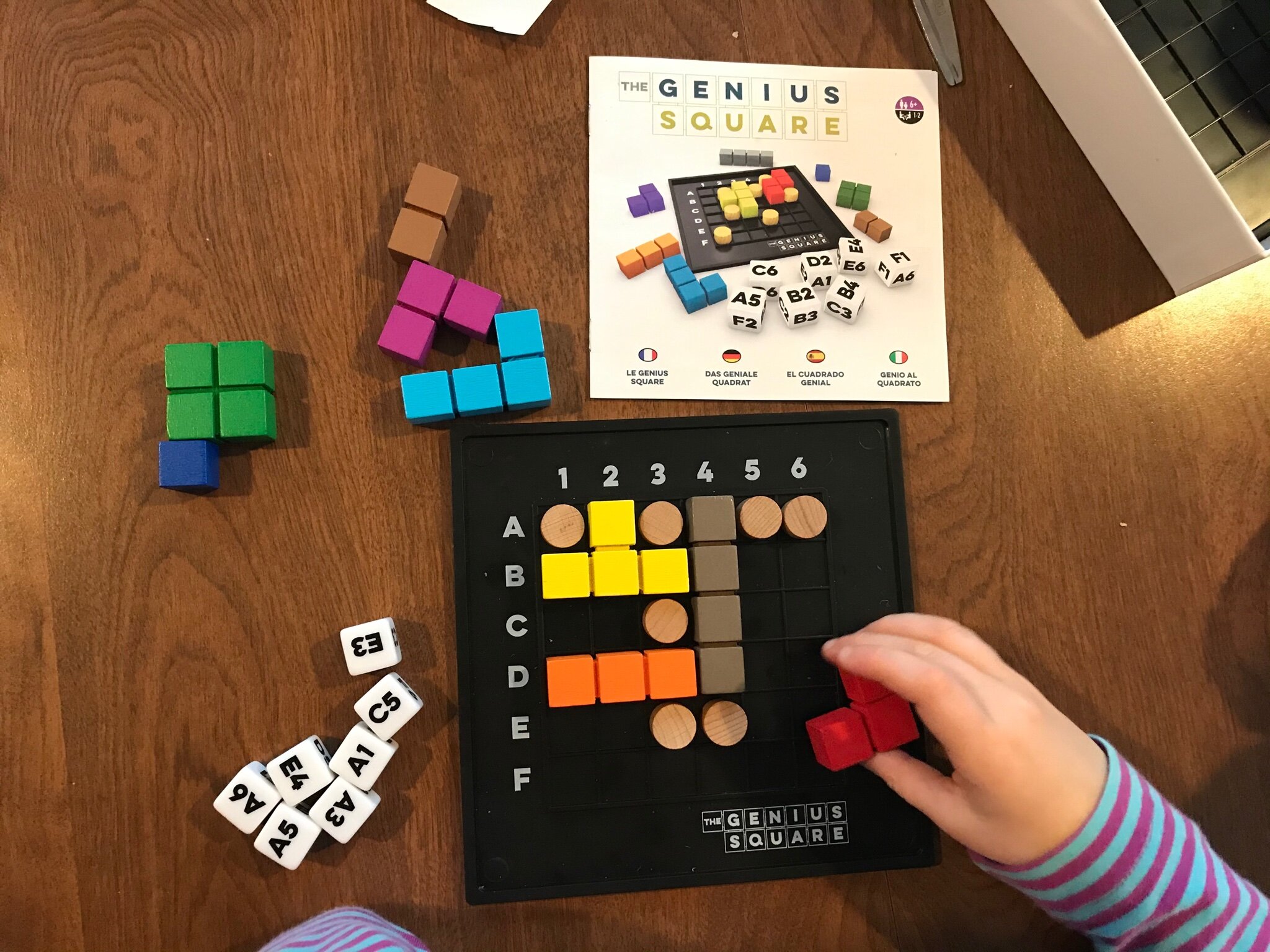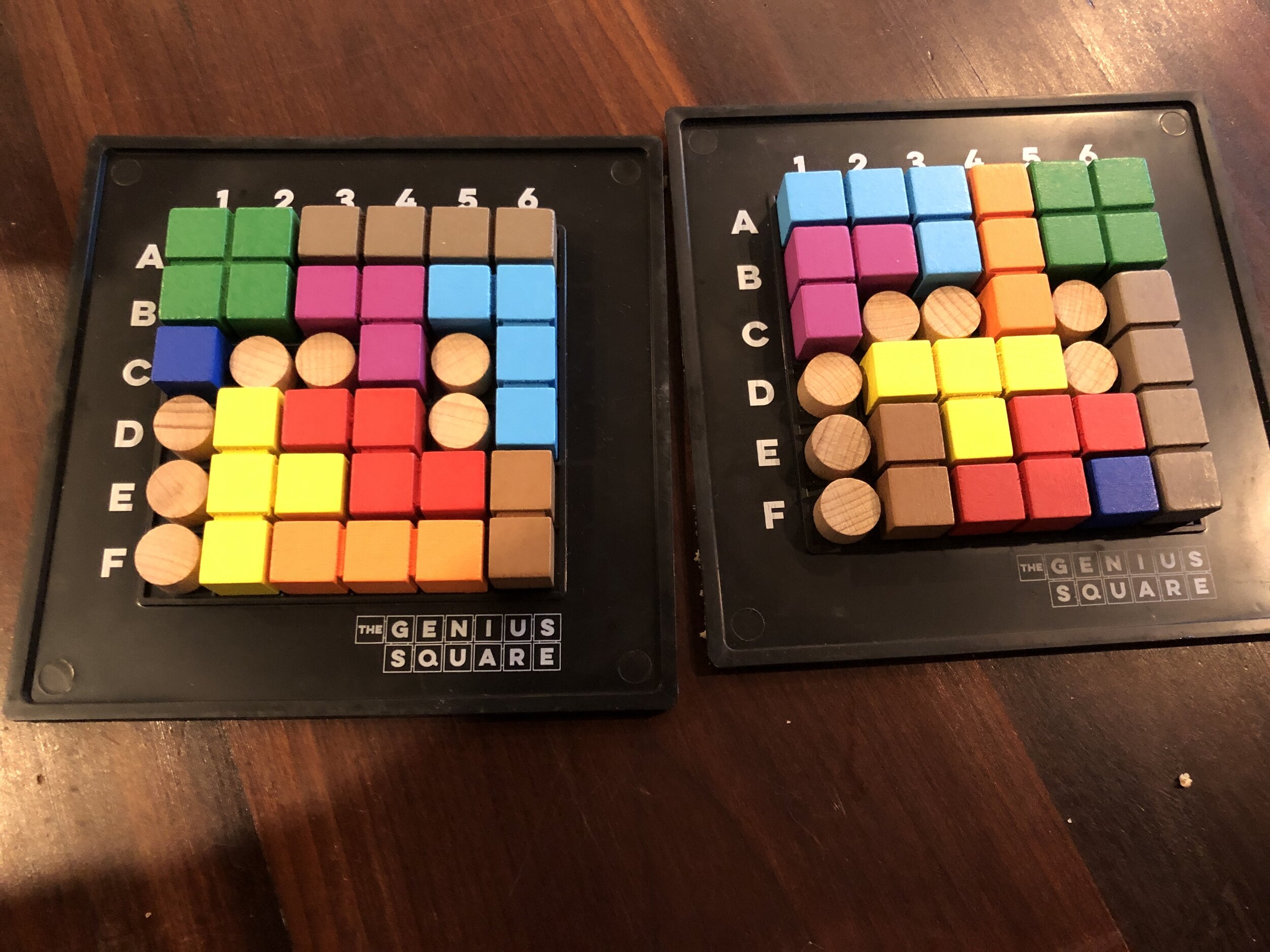The Genius Square
I have a (not so) secret: at least half the games I recommend, I found out about on Twitter.
I've used Twitter as a way to learn about math, teaching, and games for almost a decade now, and it's still my favorite place to get new ideas for math games, fun puzzles, and great classroom activities.
Yes, Twitter is an awful website that is probably bad for our society, but my little section over here with the games is really fun.
Today's recommendation came to me from Heidi Fessenden, who is a math coach and teacher in Massachusetts. Heidi has shared a ton of fun stuff with me over the years, so when she told me about this game I ordered it immediately.
The game is called The Genius Square.
How to Play
The Genius Square, unlike many puzzle games, comes with two sets of pieces so that two people can play competitively or collaboratively. Each player gets a 6x6 game board, seven cylindrical pieces, and a set of polyominoes that are shaped like various Tetris blocks.
The game also comes with a set of seven dice, each of which has Battleship-style coordinates on each face. You roll the dice and then place the seven cylinders in the spots indicated by the seven coordinates.
Then, you try to fill in the remaining spots with the Tetris pieces. Don't worry, there is guaranteed to be at least one solution, no matter what you roll! There's a reason they call it The Genius Square.
The game comes with two boards so that two players can race to see who completes the puzzle fastest. But you know me; I think that speed adds unnecessary stress and can rob a game of its mathematical depth. So I recommend that you try a variation: One player tries to fill in the board, and then the second player tries to fill in the board in a way that is totally distinct. You can see two filled boards (mine and my son's) in this photo. I'm sure there are many more than two solutions to this puzzle!
Where's the Math?
The Genius Square is another in a long line of spatial reasoning puzzles that, while not teaching mathematical content explicitly, provide a chance for your child to develop their sense of how objects fit together.
As I've said innumerable times, spatial reasoning is positively associated with math ability, and it seems that students who can visualize mental models can use those models to solve math problems in class.
Another benefit of The Genius Square: it's a fun toy even if you're not playing by the rules! My nearly-three-year-old got ahold of the game, and she immediately began filling the puzzle surface with all sorts of arrangements. She even started building towers with the blocks. When your kids start using the third dimension on a puzzle, you know it's a keeper!
Questions to Ask
The Genius Square can be a solitaire game, of course, but it sure is fun to play together, if only so you can pepper your kids with questions along the way.
One fun question to ask is "Can you place the first piece in my solution?" They can make your puzzle unintentionally more challenging with their placement. If your kid is as devious as mine, they might make it intentionally harder!
Then you can turn around and place the first piece in their puzzle, either making the problem easier or harder, depending on the level of challenge you want to give your kids.
Another fun question to ask is "Can you place the seven cylinders to make an impossible puzzle?" This is a bit harder than you might expect, and it's fun to watch your kids test the boundaries of the game by inverting the challenge.
I think The Genius Square is that perfect breakfast table game, where kids can easily have five minutes of fun while chowing down on their cereal. I like having this sort of game lying around the house, just waiting to be played with...





